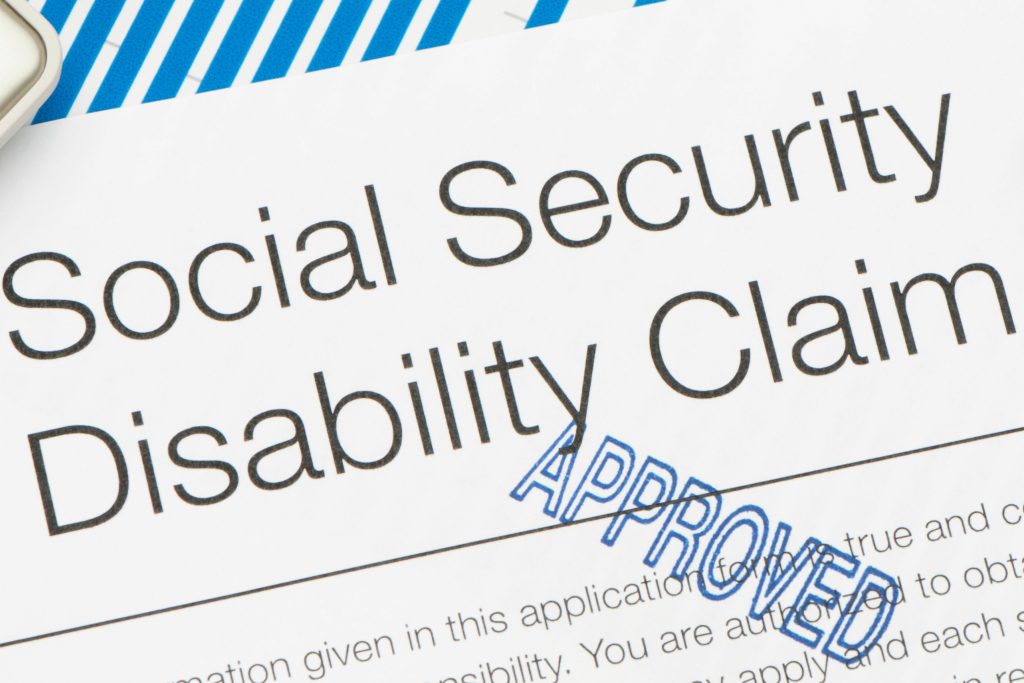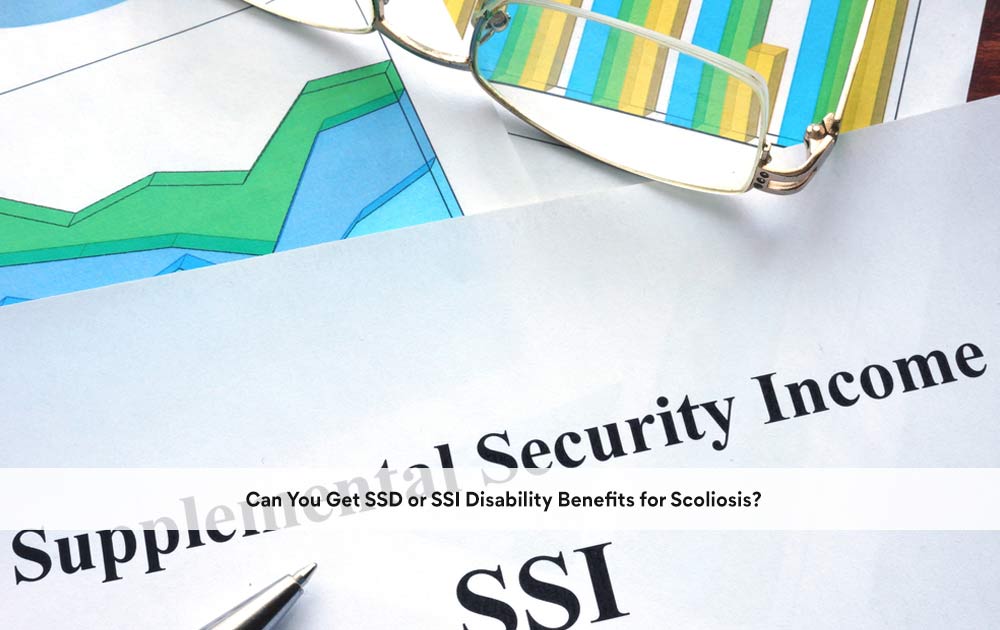Scoliosis is characterized by an abnormal curvature of the spine, ranging from mild to severe, and can significantly affect daily life. Individuals with scoliosis may experience back pain, limited mobility, and difficulty breathing, making simple tasks like sitting for long periods, lifting heavy objects, or walking challenging. Beyond physical limitations, scoliosis can lead to emotional and psychological challenges, including self-consciousness, low self-esteem, and social isolation, further impacting the quality of life.

Eligibility Criteria for Scoliosis Disability
To qualify for disability benefits for scoliosis, individuals must meet specific criteria set by the Social Security Administration (SSA). The SSA uses a five-step evaluation process to determine eligibility. This process begins with assessing whether the individual is engaged in substantial gainful activity. If income exceeds a certain threshold, the individual may be deemed ineligible for benefits. The severity of scoliosis is then evaluated, considering factors like the degree of curvature and its impact on daily activities. Typically, a curvature of 45 degrees or more is considered severe enough for eligibility.
Medical Documentation and Diagnosis Requirements
Supporting a disability claim for scoliosis requires comprehensive medical documentation. This includes a diagnosis from a qualified medical professional, such as an orthopedic specialist or spine surgeon, and detailed records of the curvature degree, associated symptoms, and impact on daily activities. Accurate and thorough medical documentation is crucial for a successful claim.

Applying for Disability Benefits for Scoliosis
The application process for disability benefits can be complex. It involves gathering necessary documentation and completing the application accurately to avoid delays or denials. Applications can be completed online or in person at a local Social Security office. Consulting with a disability attorney or advocate specializing in scoliosis can help navigate the process and improve the chances of a successful application.
The Role of Medical Professionals in the Application Process
Medical professionals are crucial in the disability application process for scoliosis. Orthopedic specialists, spine surgeons, physical therapists, and other healthcare providers provide detailed medical reports, functional assessments, and expert opinions necessary for establishing the severity of the condition and its impact on the ability to work.
Common Challenges and Pitfalls in the Application Process
The disability application process for scoliosis can present challenges. Common issues include insufficient medical documentation and failure to meet eligibility criteria. It is vital to gather all relevant medical records, including imaging studies and treatment history, and to understand the specific requirements for eligibility. Consulting with a disability attorney can help address these challenges and improve the likelihood of approval.
Appeals and Reconsideration for Scoliosis Disability
If an initial application for disability benefits is denied, individuals can appeal the decision. The appeals process includes reconsideration, a hearing before an administrative law judge, and, if necessary, further appeals to the Appeals Council and federal court. Providing additional evidence and presenting a strong case during the appeals process are essential for a favorable outcome.

Benefits Associated with Receiving Disability for Scoliosis
Disability benefits for scoliosis offer significant financial support, helping to cover medical expenses, including doctor visits and specialized treatments. Benefits also provide a stable income to replace lost wages and support daily living expenses. This financial assistance can greatly enhance the quality of life for individuals with scoliosis.
Financial Assistance and Support Programs
In addition to disability benefits, individuals with scoliosis may be eligible for other financial assistance and support programs. These can include coverage for assistive devices, home modifications, and transportation services. Medicaid and Medicare may also offer additional healthcare coverage.
Rehabilitation and Therapy Services for Scoliosis Disability
Rehabilitation and therapy services are beneficial for managing scoliosis and improving quality of life. Physical therapy can strengthen muscles, improve flexibility, and reduce pain. Occupational therapy helps individuals adapt to daily activities, while psychological counseling and support groups offer emotional support and coping strategies.
Resources and Organizations for Individuals with Scoliosis
Several organizations provide valuable support for individuals with scoliosis. The Scoliosis Research Society (SRS) offers research, education, and resources. The National Scoliosis Foundation (NSF) provides educational materials, support groups, and advocacy. These organizations are essential resources for individuals and families affected by scoliosis.
Conclusion
Scoliosis can significantly impact daily life and employment. However, disability benefits may be available to help alleviate the financial burden and provide necessary support. Understanding eligibility criteria, gathering comprehensive medical documentation, and navigating the application process with the help of medical professionals and disability advocates can improve the chances of a successful claim. Disability benefits can provide financial assistance, access to support programs, and rehabilitation services to enhance the quality of life for individuals with scoliosis.
References
- [1] National Institute of Arthritis and Musculoskeletal and Skin Diseases. ‘Scoliosis in Adults.’ Available at: https://www.niams.nih.gov/health-topics/scoliosis
- [2] Cleveland Clinic. ‘Adult Scoliosis.’ Available at: https://my.clevelandclinic.org/health/diseases/16860-scoliosis
- [3] Mayo Clinic. ‘Scoliosis in Adults.’ Available at: https://www.mayoclinic.org/diseases-conditions/scoliosis/diagnosis-treatment/drc-20351525
- [4] Spine-Health. ‘Adult Scoliosis Treatment Options.’ Available at: https://www.spine-health.com/conditions/scoliosis/adult-scoliosis
- [5] American Academy of Orthopaedic Surgeons. ‘Scoliosis in Adults.’ Available at: https://orthoinfo.aaos.org/en/diseases–conditions/scoliosis
- [6] WebMD. ‘Managing Adult Scoliosis.’ Available at: https://www.webmd.com/back-pain/adult-scoliosis
- [7] Healthline. ‘Best Braces for Adult Scoliosis.’ Available at: https://www.healthline.com/health/scoliosis-braces
- [8] MedlinePlus. ‘Adult Scoliosis.’ Available at: https://medlineplus.gov/adultscoliosis.html
- [9] Orthopaedic Foundation. ‘Choosing a Scoliosis Brace.’ Available at: https://www.orthopaedicfoundation.org/scoliosis-brace-selection/
- [10] National Scoliosis Foundation. ‘Scoliosis in Adults.’ Available at: https://www.scoliosis.org/scoliosis-in-adults/
- [11] Children’s Hospital of Philadelphia. ‘Adult Scoliosis.’ Available at: https://www.chop.edu/conditions-diseases/scoliosis
- [12] Scoliosis Research Society. ‘Adult Scoliosis Management.’ Available at: https://www.srs.org/professionals/patient-care/adult-scoliosis
- [13] American Association of Neuromuscular & Electrodiagnostic Medicine. ‘Scoliosis Bracing for Adults.’ Available at: https://www.aanem.org/Patients/Disorders/Scoliosis
- [14] Spine Universe. ‘Finding the Right Scoliosis Brace.’ Available at: https://www.spineuniverse.com/conditions/scoliosis/adult-scoliosis-bracing
- [15] Scoliosis.org. ‘Adult Scoliosis Treatment and Bracing.’ Available at: https://www.scoliosis.org/adult-scoliosis-treatment/

